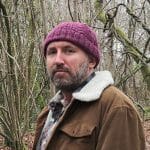Auks: One of the World’s “Extinct” Creatures

In 2017, during her Ph.D., Jessica Thomas, a student at Bangor University in Wales and the University of Copenhagen, working with a team of researchers, investigated the mystery of the missing auks. By taking ancient DNA samples from the auk organs in Copenhagen, Jessica was able to compare them with samples from five other auk museum specimens suspected to be the Eldey birds. The male Eldey great auk was tracked down to a taxidermy bird on display in the Royal Belgian Institute of Natural Sciences in Brussels. The final resting place of the female Eldey auk remains unknown – although a specimen held in the Cincinnati Museum of Natural History & Science seems a possible candidate.
Jessica also laid another mystery to rest. After the auk vanished, many people would not accept that we were the sole reason for the bird’s extinction. There must have been other environmental factors at play that pushed the bird over the brink. Using ancient DNA taken from the bones of 41 different great auks ranging from 15,000 years old to the last two Eldey individuals, Jessica and her colleagues were able to investigate and compare the birds’ genetic diversity. A low genetic diversity would leave the species vulnerable to environmental changes, with the entire population being less able to adapt and recover.
However, the samples showed high genetic diversity. There was no evidence that populations were already declining or at risk of extinction prior to the intensive slaughter. They were doing just fine until we turned up. Amid Jessica’s statistical models and dense calculations is the scientific evidence that proves man can be brutal and thoughtless. We wiped this unique species off the planet in a few short centuries. It denied me and millions of others the thrill of living alongside this incredible animal.
About The Author
 Michael Blencowe (author) lives in Sussex, where he works and volunteers for several local wildlife conservation charities. For the past ten years, he has been inspiring people to take action for nature through his writing, leading wildlife events, delivering talks, and putting hawk-moths on children’s noses. Blencowe is co-author of The Butterflies of Sussex (Pisces, 2017). Michael created the mini-book of caterpillars that accompanies Julia Donaldson’s The Woolly Bear (Macmillan, 2021). He is saving his pennies so that he can one day go to Bering Island. Copyright 2021. Reprinted with permission from Leaping Hare Press, an imprint of The Quarto Group. ISBN: 9780711256750, -Page 27-31
Michael Blencowe (author) lives in Sussex, where he works and volunteers for several local wildlife conservation charities. For the past ten years, he has been inspiring people to take action for nature through his writing, leading wildlife events, delivering talks, and putting hawk-moths on children’s noses. Blencowe is co-author of The Butterflies of Sussex (Pisces, 2017). Michael created the mini-book of caterpillars that accompanies Julia Donaldson’s The Woolly Bear (Macmillan, 2021). He is saving his pennies so that he can one day go to Bering Island. Copyright 2021. Reprinted with permission from Leaping Hare Press, an imprint of The Quarto Group. ISBN: 9780711256750, -Page 27-31
Ministry Earth is a collective Awareness-Raising, Perception-Building Initiative from Humanity Healing International, Cathedral of the Soul Educational outreaches created to introduce the perspective of Ethical Consciousness and Nonhuman Personhood to its Animal & Eco Ministries. Ministry Earth is a Service-Oriented Initiative and its Magazine is a Copyrighted Publication of OMTimes Media, Inc. Broadcasting and Publishing House.






